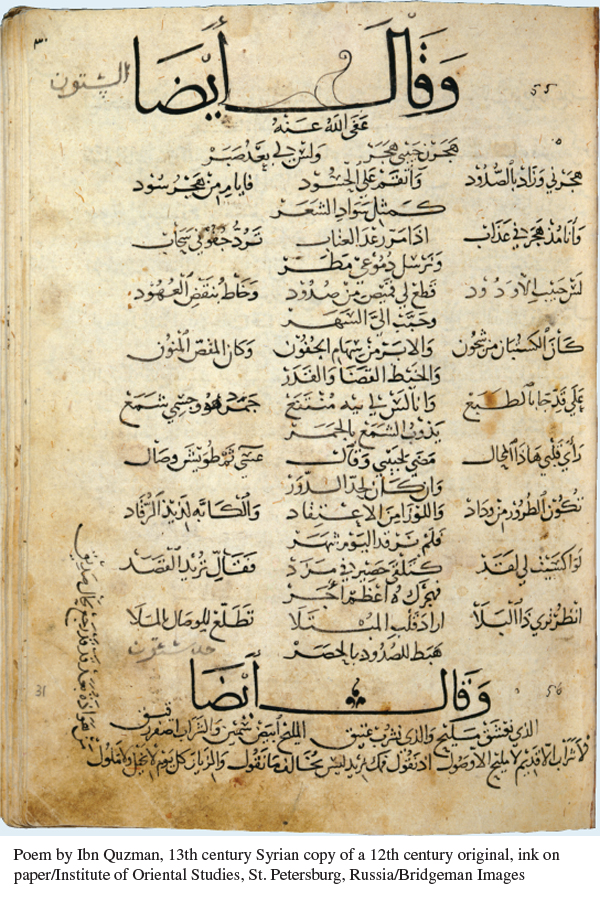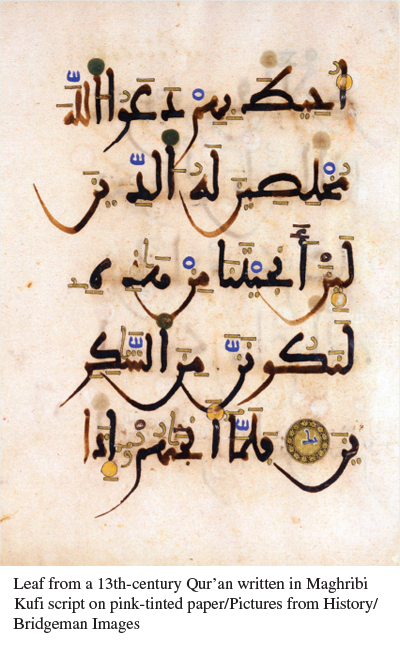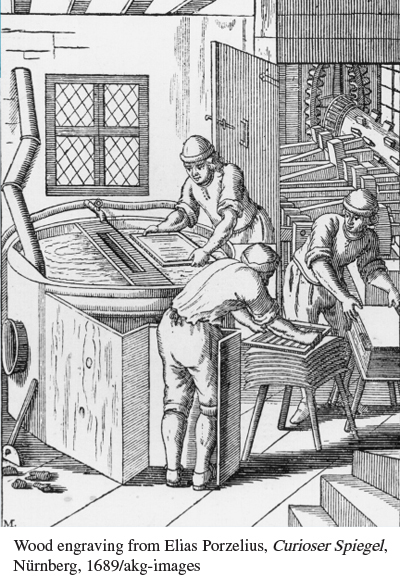A History of Western Society: Printed Page 226
Living in the Past
Muslim Technology: Advances in Papermaking
A long with scientific and medical knowledge, technological advances often entered Europe through Muslim Spain. One of these was papermaking. Ancient Egyptians had made a writing surface by weaving pounded papyrus stalks (the origin of the word paper), and sometime before 100 B.C.E. the Chinese invented paper that could be made from many different materials. They shredded and mashed rags and woody plant fibers in water to make a pulp, dipped a large, flat wire screen into this pulp to form a mat of fibers, and pressed the resulting sheet between layers of felt to dry. The Chinese used paper for wrapping and writing, and merchants and Buddhist missionaries carried the skills of papermaking to Samarkand in Central Asia (see Map 8.1). When this area was conquered by Arab armies, papermaking techniques spread into Muslim areas. Muslim papermakers improved on Chinese techniques, producing thicker and smoother sheets by using starch to fill the pores in the surfaces of the sheets. They carried this new method to Iraq, Syria, Egypt, and the Maghrib (North Africa), from where it entered Spain. Paper mills that produced large quantities were opened in Baghdad around 800 and in Muslim Spain around 1100.

By that point, paper was the most common writing surface in the Muslim world, though Christian Europeans were still largely using parchment or vellum, both made in a time-


QUESTIONS FOR ANALYSIS
- What advantages did paper offer over other writing materials?
- Consider the traditions and rapid expansion of Islam. How might these factors have contributed to the use and spread of paper technology?
- Based on the description and the illustration of the papermaking process, why do you think paper mills were generally located along streams?